On this week’s Rocket Roundup, SpaceX launches NASA astronauts and more Starlink satellites, and Arianespace launches military satellites for France. Plus, this week in rocket history we look back at the only launch of the Soviet Space Shuttle, Buran.
Podcast
Show Notes
SpaceX launches third ISS crew mission
- NASA’s SpaceX Crew-3 Launch Delayed from Nov. 3 (NASA)
- Crew Dragon Endurance Docked to the Space Station (NASA)
- Launch video
- Docking video
Upgraded Starlink Satellites launch after downtime
- Starlink-28 discussion thread (Reddit)
- Launch video
Arianespace launches CERES satellites
- PDF: VV20 launch kit (Arianespace)
- Vega info page (Arianespace)
- Launch video
This Week in Rocket History: Soviet Buran Space Shuttle
- Buran info page (Astronautix)
- Buran (buran.ru) (Russian)
- Energia info page (Astronautix)
- Polyus info page (Astronautix)
Transcript
Hello, and welcome to the Daily Space. My name is Erik Madaus.
And I am Annie Wilson.
Most weekdays the CosmoQuest team is here putting science in your brain.
Today, however, is for Rocket Roundup.
Let’s get to it, shall we?

On November 11 at 02:03 UTC, a SpaceX Falcon 9 successfully launched the SpaceX Crew 3 mission to the International Space Station from LC-39A at the Kennedy Space Center in Florida.
Onboard Crew Dragon Endurance was the usual complement of four astronauts: three rookies from both NASA and ESA as well as an experienced NASA astronaut. NASA’s Raja Chari and Kayla Barron as well as German ESA astronaut Matthias Maurer are making their first spaceflights. Joining them is spaceflight veteran Thomas Marshburn who previously flew on the Shuttle and on the Soyuz to the ISS.
This is also the first flight for Crew Dragon C210. It is the latest addition to SpaceX’s fleet of crewed capsules, which now number three vehicles. Previous Crew Dragon capsules have been given names by their first crews and this one is no different. Spacecraft Commander Raja Chari announced that the capsule’s name was Endurance. The name was inspired by one of the ships in Sir Ernest Shackleton’s failed 1914 Antarctic expedition of the same name. The name is also a reference to both the challenge of building the spacecraft and training for the mission during the current pandemic conditions and continues the NASA tradition of naming crewed spacecraft after previous exploration ships.
After just over twenty hours en route to the ISS, Endurance automatically docked to the forward port on Node 2. Two hours after hard docking, the docking adapter was pressurized and leak checks were completed before the hatches between the spacecraft and station were opened. During the welcome ceremony, the new astronauts were given their gold astronaut wings signifying they had crossed above the 100-kilometer Kármán Line and into space.
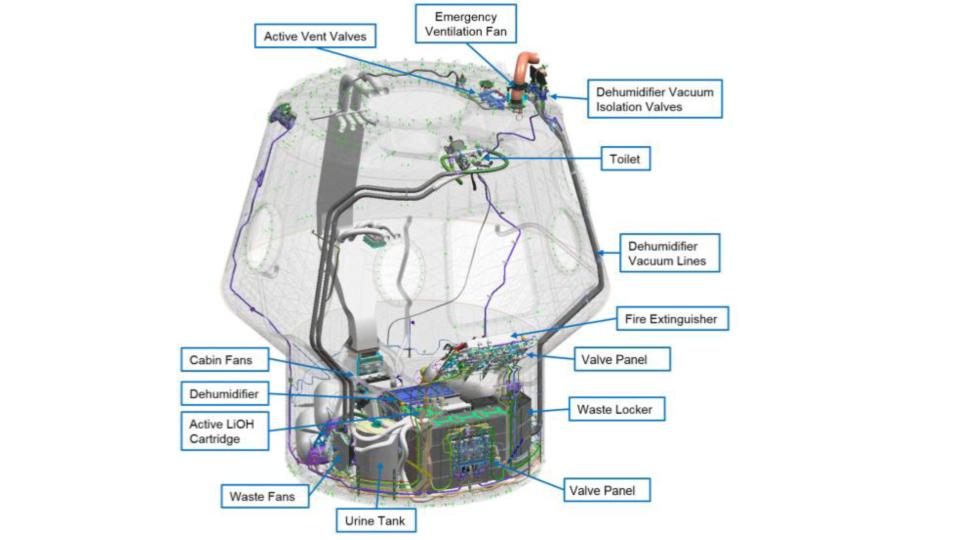
Crew 3 was delayed several times before finally launching which resulted in Crew 2 having to return before its arrival, instead of having several days of overlap like initially planned. The first delay was because of a storm downrange which could have interfered with capsule recovery in the event of an abort, and the second was because of a “minor medical issue not related to COVID-19”. Fortunately, that medical issue did not result in the crewmember being replaced with their backup. After that, the launch was delayed further due to bad launch weather and also problems with the toilet.
Specifically, a urine leak was discovered on capsule 207 during the Inspiration 4 mission. There is a tube that connects the toilet inside the occupied portion of the spacecraft to the urine storage tank in the bottom of the capsule service section. That tube came loose from the storage tank allowing urine to leak in the service section of the capsule. Urine is corrosive and this leak could have caused damage to essential systems.
The same problem was found in the Crew 2 capsule C206 while on orbit. Not wanting to cause more damage, the crew was forbidden from using the toilet during their return to Earth. To make their trip back a bit more comfortable, the astronauts wore “absorbent undergarments” under their spacesuits. The faulty connection was patched on the ground in the Crew 3 capsule before its launch, but this took several days to complete.
Booster 1067 successfully landed on the droneship A Shortfall Of Gravitas stationed about 600 kilometers northeast of the pad in the Atlantic Ocean. This was the booster’s second flight and the third flight of a Crew Dragon on a reused Falcon 9. It was brought back to Port Canaveral by SpaceX’s new support vessel, Doug, the day after the next launch we’re going to tell you about, Starlink 31.
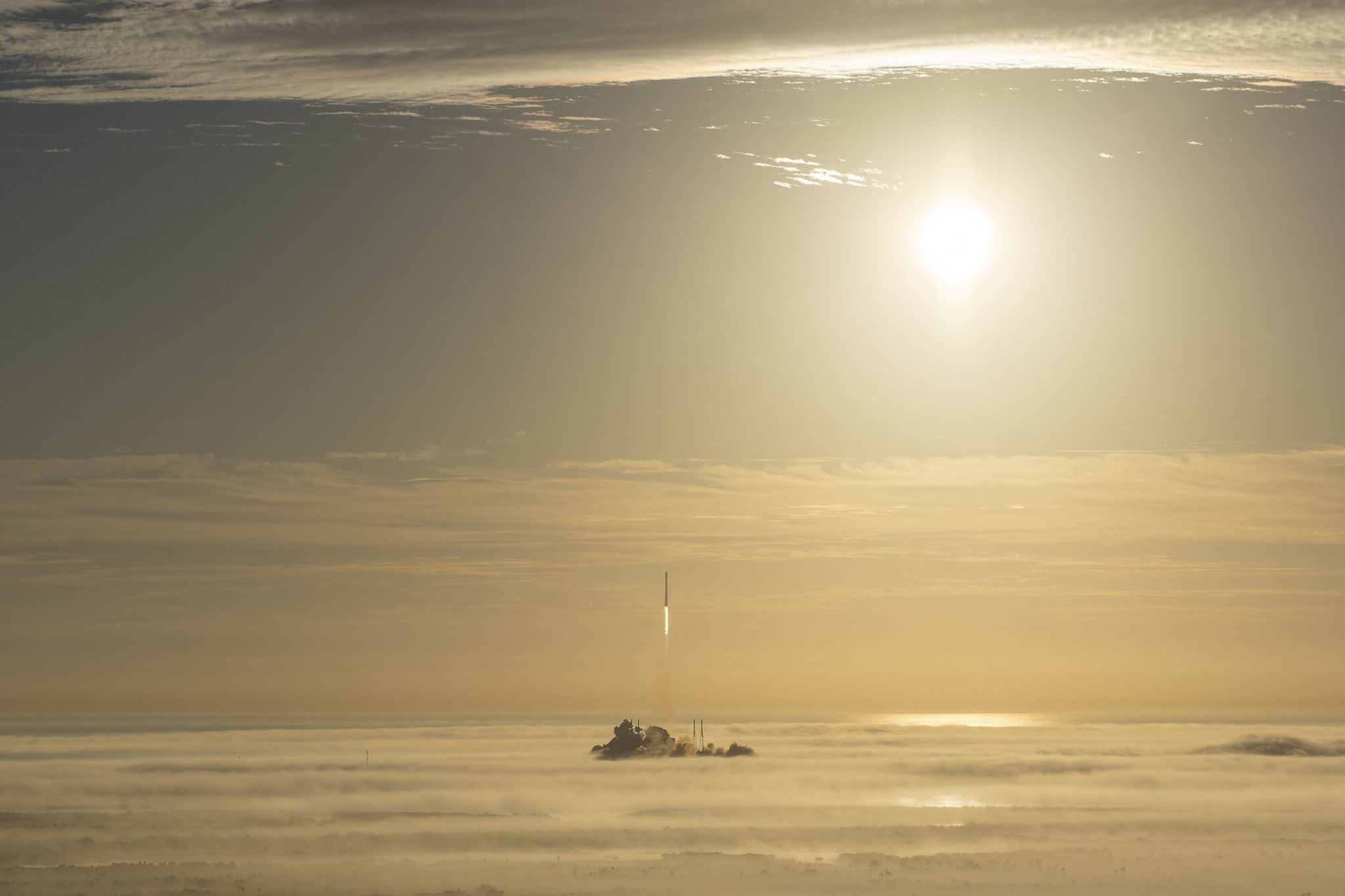
Next up, on November 13 at 12:19 UTC, the Starlink L31 mission launched atop Falcon 9 booster 1058 from SLC-40 at Cape Canaveral Space Force Station in Florida.
This was the ninth flight for Booster 1058, which successfully landed on the drone ship Just Read The Instructions. It is now in the exclusive club of Falcon 9 boosters which have flown more than eight times. Booster 1049 and 1051 have flown ten times each.All 53 satellites were successfully deployed into orbit after one upper stage burn.
If it seems like the pace of Starlink launches has slowed from the beginning of the year, you’re right. The last Starlink launch before this one was in September. Before that, the last launch was in May. According to SpaceX on a Starlink support page, this new batch of satellites was delayed because of the global microchip shortage.
This was the first launch of the fourth shell of the Starlink constellation, which will see the same number again of satellites launched in the first shell launched into an orbit 20 kilometers higher than the first one and at a slightly higher inclination.
Starlink L31 features the first batch of Version 1.5 satellites to be put in orbit. This newest version now has satellite laser interlinks as a standard feature. Previously, the technology was tested on just a handful of older satellites. The laser links make the satellites somewhat heavier than the older models. Between the extra mass and the slightly more inclined orbit, Falcon 9 can only carry 53 instead of the previous 60.
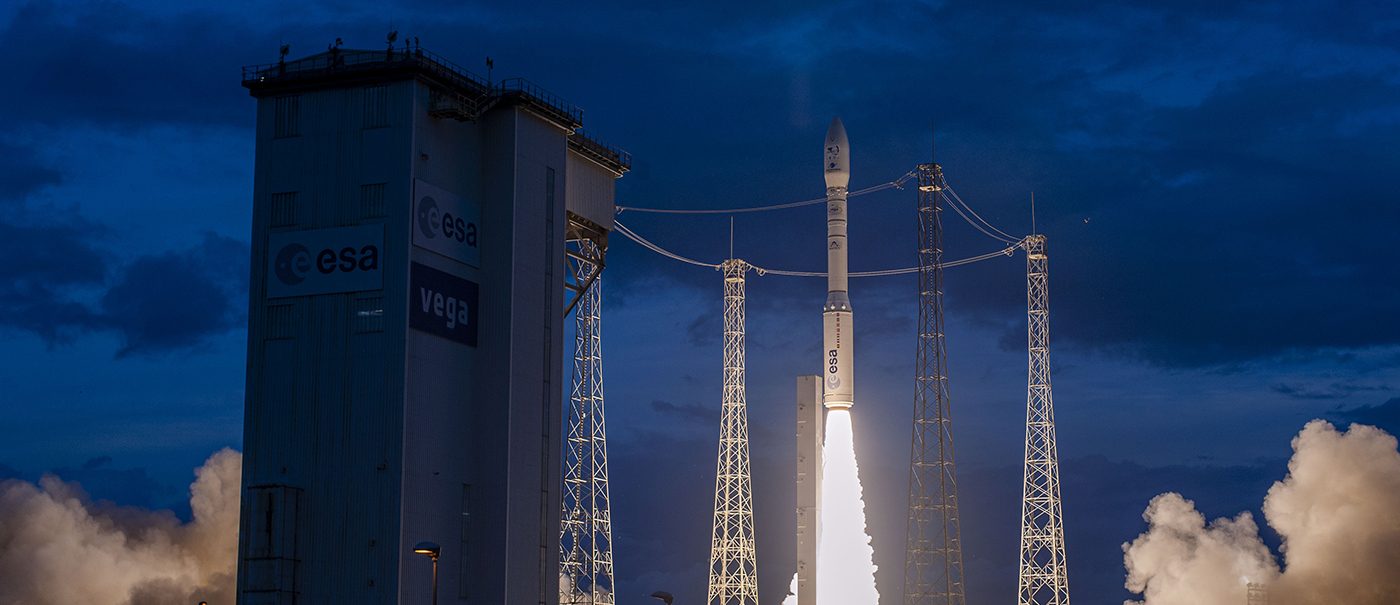
On November 16 at 09:27 UTC, an Arianespace Vega launched three CERES satellites into a 700-kilometer orbit from the Guiana Space Center.
CERES is a new constellation of signals intelligence satellites for the French military. Signals intelligence is intelligence-gathering by intercepting signals such as communications between people, cell towers, radio stations, and other electronic sources. The three-satellite constellation will fly over target locations once a day in a close formation, which gives them the ability to precisely locate transmitters.
The launch of these satellites is a Big Deal for France. According to the launch press kit: France is now the only European country that has joined the closed club of the most advanced nations in the intelligence of electromagnetic sources.
Built by Airbus Defense and Space, each satellite weighs in at 446 kilograms each; that’s about as heavy as a grand piano. Thales Defense Mission Systems provided both the payload and its ground system.
The total mass inserted into orbit, including the three satellites and the adapter to launch them all on one rocket, was 1,548 kilograms or almost the mass of a 2009 Ford Taurus. Vega is the smallest rocket operated by Arianespace, capable of putting 1,500 kilograms into a 700-kilometer orbit, so this mission maxed out its capabilities.
The three satellites were separated from the fourth stage of the rocket just under one hour after launch following two burns of that stage to put the satellites into the intended orbit.
The next Arianespace launch will be the JWST on an Ariane 5.
This Week in Rocket History
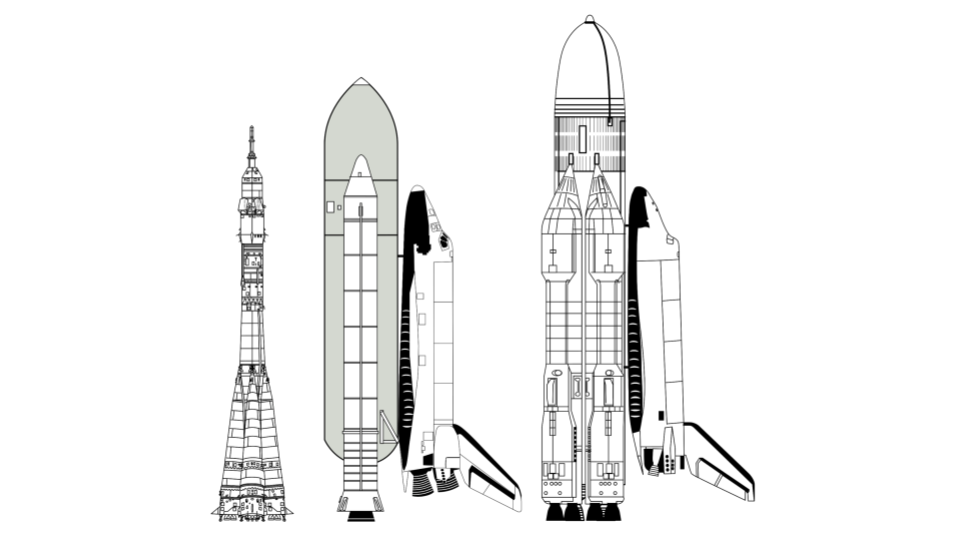
This past Monday, November 15, marked the 33rd anniversary of the first and only launch of the Soviet Buran Space Shuttle.
The Buran program, officially known as VKK or “air space ship”, was started in 1974 in response to Soviet fears that the United States was going to use their Space Shuttle to nuke them or otherwise interfere with their space assets in orbit.
In traditional Soviet fashion, Buran development proceeded with extensive ground and then flight testing, just like with the Soyuz spacecraft. This resulted in small models which were launched onto high suborbital trajectories to test the heat shield, lots of full orbiter fuselage test articles for different subsystems, and even one which could take off under its own power to practice landings with two pairs of jet engines. The orbital vehicle was going to be outfitted with one pair of jet engines which could, in theory, allow it to have multiple landing attempts, unlike the U.S. shuttle. This atmospheric test vehicle was called OK-GLI, and it was piloted by a crew of two. It flew 25 times between 1985 and 1988.
The Buran orbiter was largely similar to the American vehicle it copied but with several key improvements. Most notably, since its Energia rocket was intended to launch non-orbiter payloads, the Buran orbiter lacked the large and expensive main engines. These main engines were simplified and put on the expendable core stage of the Energia rocket. The orbiter itself only had orbital maneuvering engines. Moving the main engines allowed a five-ton increase in payload capacity compared to the U.S. shuttle.

Because the Soviet Union did not have the technology to develop large solid motors like those used on the Shuttle, the four boosters on the Energia used liquid engines. Each booster had one RD-170 engine, which powered four nozzles with one turbopump. To this day, it is the most powerful liquid-propellant rocket engine ever made, putting out an incredible 7.9 meganewtons of thrust. For comparison, all nine engines on the first stage of Falcon 9 Block 5 put out 7.6 meganewtons of thrust.
The first flight orbiter, OK-1.01, was delivered to Baikonur in 1984 only partially assembled. This partial assembly was required because the Soviets literally did not have a plane large enough to be capable of transporting the entire thing, so instead, components were flown on a modified M-4 bomber from the factory near Moscow to Baikonur.
Before Buran could fly, the rocket that would put it into orbit — the Energia — needed to be tested. Energia was intended to launch a variety of payloads, not just the Buran orbiter. The first launch of Energia was in May 1987, launching the Polyus space laser battle station. Unfortunately, or perhaps fortunately for the tensions in the Cold War at the time, the launch failed because of a programming error. To keep the center of mass in a good spot for launch, Polyus was launched upside down. After separation from Energia, it was supposed to flip 180 degrees and finish orbital insertion. Instead, it flipped 360 degrees and sent itself into the southern Pacific Ocean. Because the launch failure had nothing to do with the rocket, Energia was cleared to launch the Buran.
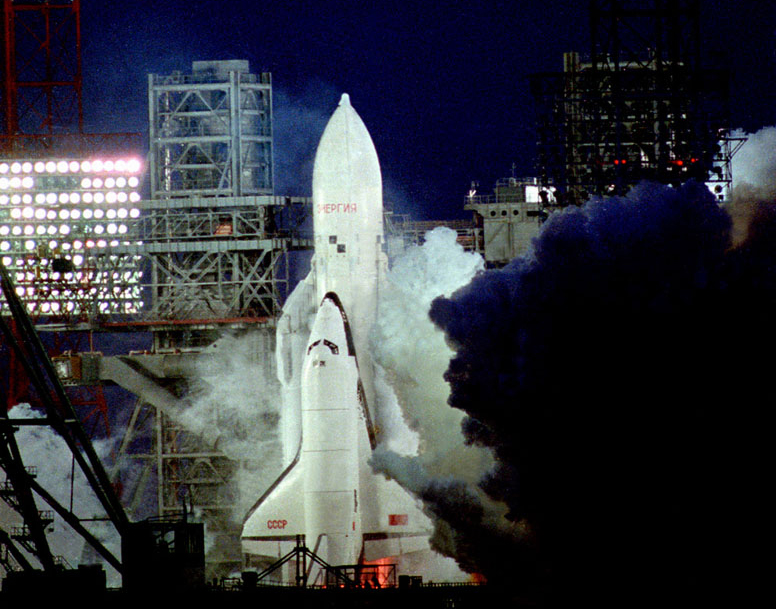
The Soviets debated on the length of the first Buran mission, eventually deciding to only have a two-orbit flight. This would limit the number of systems needed to be ready for launch since a two-hour flight could be done on battery power without the help of an auxiliary power unit. A short flight also meant there was no need to deploy the payload bay doors and their radiators. This mission would prove the launch, some on-orbit systems, and the autonomous re-entry and landing.
OK-1.01 and its Energia were rolled out to the pad in October 1988. The launch was delayed several times for different technical problems, before finally launching in high wind conditions on November 15, 1988, at 0600 UTC. Just as planned, the uncrewed Buran was lifted almost all the way into orbit by Energia and successfully inserted itself into orbit minutes later. Two hours and twenty minutes later Buran deorbited itself, coming to a landing just to the side of the runway centerline — not bad for a spacecraft that’s flying itself. Igor Volk, who was to command the first crewed flight, flew a chase plane next to Buran as it landed.
The next planned flight of a Buran vehicle was going to be in 1991 using the second flight orbiter, but the Soviet Union collapsed before that could happen. The program was canceled in 1993. To add ultimate insult to injury, orbiter OK-1.01 and a flight-ready Energia rocket were destroyed in 2000 when its hangar roof collapsed due to lack of maintenance.
Statistics
To wrap things up, here’s a running tally of a few spaceflight statistics for the current year:
Toilets currently in space: 8: 4 installed on ISS, 1 on the Crew Dragon, 1 on the Soyuz, 1 on the Shenzhou, and 1 on Tianhe.
Total 2021 orbital launch attempts: 113, including 9 failures
Total satellites from launches: 1584
We keep track of orbital launches by where they launched from, also known as spaceport. Here’s that breakdown:
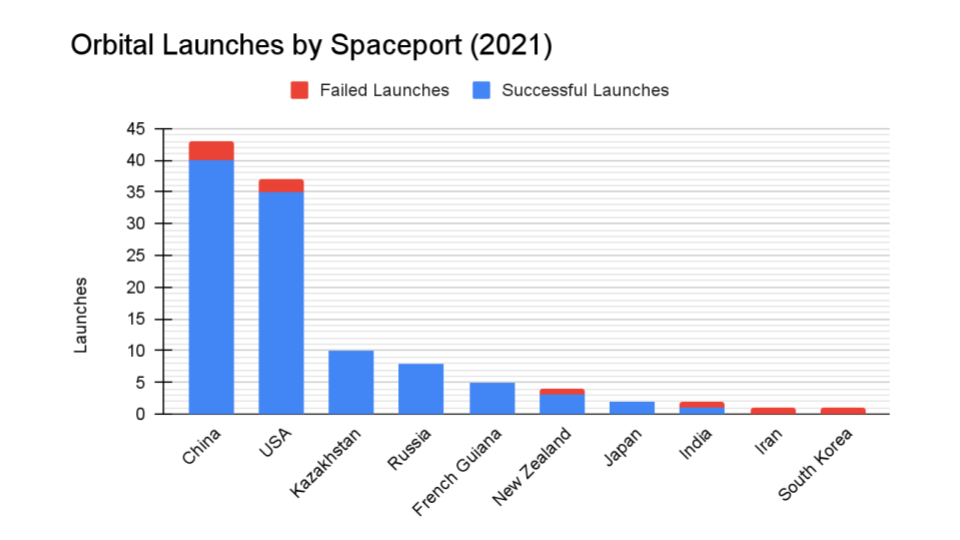
China: 43
USA: 37
Kazakhstan: 10
Russia: 8
French Guinea: 5
New Zealand: 4
Japan: 2
India: 2
Iran: 1
South Korea: 1
Your random space fact is that SpaceX has two new ships in its East coast fleet: Bob and Doug. Named after NASA astronauts Robert Behnken and Douglas Hurley, who were the test pilots who flew the SpaceX Demonstration 2 mission in May 2020, each SpaceX-owned ship replaces two previously leased ships by combining the capabilities of an ocean-going tug with a crane vessel.
This has been the Daily Space.
You can find more information on all our stories, including images, at DailySpace.org. As always, we’re here thanks to the donations of people like you. If you like our content, please consider joining our Patreon at Patreon.com/CosmoQuestX.
Credits
Hosts: Annie Wilson and Erik Madaus
Writers: Gordon Dewis, Pamela Gay, Erik Madaus, and Annie Wilson
Audio and Video Editing: Ally Pelphrey
Content Editing: Beth Johnson
Executive Producer: Pamela Gay
Intro and Outro music by Kevin MacLeod, https://incompetech.com/music/


 We record most shows live, on Twitch. Follow us today to get alerts when we go live.
We record most shows live, on Twitch. Follow us today to get alerts when we go live.